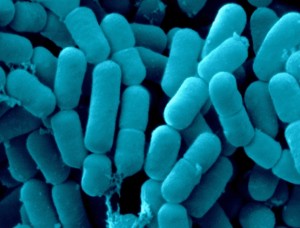Jan
30
2015
A recently published poll from the Pew Research center finds that there is a huge gap between public opinion and the opinion of scientists on many important scientific issues of the day. This is disappointing, but not surprising, for a variety of reasons.
Generally speaking, if the majority of scientists have the same opinion about a scientific question (especially relevant experts), then it is a good idea to take that majority opinion seriously. It does not have to be correct, but if you were playing the odds I would go with the experts. If public opinion differs from the opinion of scientists on a scientific question, it is a safe bet that the public is wrong, probably because of interfering cultural, social, political, ideological, psychological, or religious beliefs. (Scientists have those too, which may explain the minority opinion in some cases.)
This attitude is often portrayed as elitism – usually by those who disagree with the scientific majority. Those relatively new to concepts of critical thinking, or trying to sound as if they are critical thinkers, might also dismiss such sentiments as an “argument from authority,” and then declare themselves the victor because they were able to point to a logical fallacy. They miss the fact that informal logical fallacies are context dependent, and it is not a fallacy to respect (within reasonable limits) the consensus of expert opinion.
Continue Reading »
Jan
29
2015
The Disneyland measles outbreak has the anti-vaccine movement on the ropes a bit. As I and pretty much all of my colleagues at Science-Based Medicine have predicted for years, once previously contained infectious illnesses start to seriously return, public opinion will shift against the anti-vaxxers.
We are seeing more mainstream stories like this one, Mom: Family that refused vaccination put my baby in quarantine, from CNN, and this one, Vaccine deniers stick together. And now they’re ruining things for everyone, from the Washington Post. As I mentioned in my earlier post, The Onion also nailed it with this satire, I Don’t Vaccinate My Child Because It’s My Right To Decide What Eliminated Diseases Come Roaring Back.
Of course, the cranks are unmoved. Their position is not based on a rational assessment of the evidence, and therefore evidence will not move them from their perch. What they have been doing is repeating tired anti-vaccine tropes. Unfortunately they are getting some exposure from residual false balance in the media.
Continue Reading »
Jan
27
2015
This is an ongoing story that isn’t over yet. As it has been raging for days now, most people have probably heard that there is a big measles outbreak starting in Disneyland in California. There are now 87 confirmed cases of measles, 50 of which can be directly linked to Disneyland. Of the 42 people so far whose vaccination status is known, 34 were unvaccinated, 3 were partially vaccinated, and 5 were fully vaccinated.
Yes, this is caused by those who are not vaccinated
One thing is absolutely certain from these numbers – this outbreak has largely been caused by those who are not vaccinated. As you can see, most of those affected are unvaccinated. The vaccination rate for MMR is about 90% in the US. This means those who are unvaccinated were about 67 times more likely to be infected with measles in this outbreak than those fully vaccinated.
If vaccination rates were higher, then herd immunity could have stopped or severely limited the spread of the disease. That is the point of herd immunity – if enough people are protected then the virus is less likely to find a vulnerable host and continue the spread. The vaccine is about 97% effective in those fully vaccinated, which is why there were a few vaccinated people who contracted the disease.
Continue Reading »
Jan
26
2015
 Lucid dreaming is a very interesting phenomenon that perhaps gives us a peek into the inner workings of the human brain. I have had about a dozen lucid dreams in my life that I can remember. Normally while dreaming we are not aware of the fact that we are dreaming. Our dreaming selves accept the reality of the dream. During a lucid dream we become aware that we are dreaming, but we do not wake up. This state is inherently unstable and often results in actually waking up or dreaming that we wake up, which ends the lucidity.
Lucid dreaming is a very interesting phenomenon that perhaps gives us a peek into the inner workings of the human brain. I have had about a dozen lucid dreams in my life that I can remember. Normally while dreaming we are not aware of the fact that we are dreaming. Our dreaming selves accept the reality of the dream. During a lucid dream we become aware that we are dreaming, but we do not wake up. This state is inherently unstable and often results in actually waking up or dreaming that we wake up, which ends the lucidity.
The phenomenon of lucid dreaming was originally known from self report, but was first verified in a 1981 study in which subjects consciously gave a signal while lucid dreaming – they carried out predetermined actions in their dreams that resulted in “observable concomitants.”
One of the goals of lucid dreaming research is to determine what exactly is happening in the brains of those who are lucid while dreaming. One hypothesis is that part of the frontal lobes may be more active, allowing for greater self-reflection and reality-testing while dreaming. Preliminary studies, for example using EEG to look at brain activity during wakefullness, normal REM sleep, and lucid dreaming, suggested that lucid dreaming is a hybrid state between fully awake and REM sleep. The frontal lobes are more active in lucid states than normal REM, but not as active as fully awake.
Continue Reading »
Jan
23
2015
Don’t click it. If you ever get e-mailed a link, no matter how authentic the e-mail looks or from whom it appears to be, don’t click it. If you feel you need to respond to the e-mail, then type the URL of the website directly into your browser. But never click it.
As simple as that rule sounds, it’s difficult for everyone to remember the rule all the time. One lapse of attention, and you can find yourself the victim of identify theft, have your credit card numbers stolen, or even all your passwords. Unfortunately there is a lot of money to be made in identity theft and there are many criminals out there.
So-called “phishing” scams involve sending out spam e-mails that are designed to provoke the reader into clicking a link which goes to a dummy website that will load malware on your computer that will mine it for passwords, identity information, and credit card information. Such scammers are getting better and better and provoking the click.
Continue Reading »
Jan
22
2015
 In Jurassic Park the scientists who created the dinosaurs from DNA trapped in amber included what they called the “lysine contingency.” They engineered the dinosaurs so that they could not manufacture the amino acid lycine. The dinosaurs could only survive if they were fed lysine by the park staff. Without the supplement they would quickly fall into a coma and then die.
In Jurassic Park the scientists who created the dinosaurs from DNA trapped in amber included what they called the “lysine contingency.” They engineered the dinosaurs so that they could not manufacture the amino acid lycine. The dinosaurs could only survive if they were fed lysine by the park staff. Without the supplement they would quickly fall into a coma and then die.
This contingency was a fail safe if any dinosaur ever escaped from their designated areas, or from the park itself. However, the lysine contingency failed. Dinosaurs could survive by eating lysine rich foods, like chickens or soya beans, or other dinosaurs.
Biologists have now done Jurassic Park one better. Genetically modified bacteria are extremely useful. Bacteria have been engineered to produce drugs, like insulin, or to eat up spilled toxins or petroleum products, or to make synthetic fuel. There is always a concern, however, that such a synthetic bacteria could get out into the wild with unpredictable effects. Physical containment strategies are therefore used to minimize the chance of this happening.
Research teams at Harvard and Yale have developed a new strategy of containment. The genetic code shared by all life involves a language of 3 nucleotides, of which there are 4 types, resulting in 64 different combinations. Each three letter combination codes for an amino acid, of which there are 20 used by living organisms. This allows for some redundancy, with each amino acid having 2-3 different codes. There are also some regulatory codes, such as stop codons – three letter combinations that tell the machinery to stop making the protein at that point.
Continue Reading »
Jan
20
2015
 When a suspect confesses to a crime, that is a powerfully persuasive piece of evidence. People assume (reasonably) that no one would confess to a crime they didn’t commit, extrapolating from the conviction that they would never do so themselves.
When a suspect confesses to a crime, that is a powerfully persuasive piece of evidence. People assume (reasonably) that no one would confess to a crime they didn’t commit, extrapolating from the conviction that they would never do so themselves.
Of course there are legal reasons why someone accused of a crime would confess to guilt, in order to plea to a lesser charge or sentence and avoid the risk of a much more serious sentence. It is an unfortunate reality that innocent people can be wrongly convicted, and therefore an innocent person might confess in order to avoid the worst consequences of such a wrongful conviction.
Would, however, someone confess not to secure a plea bargain but simply because they are being aggressively interrogated? New research suggests that it is possible to form false memories of having committed crimes that one never committed. This is not surprising given all the previous memory research showing how easy it is to form false memories.
Continue Reading »
Jan
19
2015
There is a major anti-golden rice smear and disinformation campaign underway, spearheaded by Greenpeace with other anti-GMO activists on board. They themselves consider golden rice to be a “Trojan horse” for GM technology in general, so they essentially admit that their motivation is to oppose GM technology, even if that means opposing a technology that can save the sight and lives of poor children.
Golden rice is a genetically modified rice variety with enhanced production of beta carotene, the pro-vitamin of Vitamin A. The name derives from its golden color, provided by the beta carotene, the same thing that makes carrots orange. Carrots, by the way, were originally white and were modified through breeding to produce beta carotene, which was a very successful biofortified campaign in Europe that effectively combated vitamin A deficiency.
In response to my post from last week on biofortified GM crops, one commenter did a large “cut and paste” into the comments (generally considered a comment etiquette no-no, but I let it through because the topic is so important) with essentially the full anti-golden rice propaganda. The commenter seemed to think this constituted a “convincing” argument. Let’s see.
*GR IS STILL NOT READY
While there have been long delays in the development of GR since it was “invented” in 2000 (1), this has not been due to the activities of anti-GMO activists, but to basic R&D problems.
This is confirmed in a statement by the International Rice Research Institute, the main body working on the GR project (2). According to the Institute, the time frame for developing a new product is about 13 years, and GR is “still under development and evaluation”. In September 2013 the IRRI expected GR to take another two years before it was ready.
While this point is essentially correct, it is not an argument against the adoption of golden rice. Golden rice (GR) development began in the 1980s. By 2000 the first GR variety was ready, but it produced too little beta carotene to be effective. GR2, using different genes, was ready by 2005 and contained 23 times as much beta carotene as GR 1. This is enough to effectively combat vitamin A deficiency in cultures that consume rice as their primary staple.
Continue Reading »
Jan
16
2015
 My mental map of our solar system has evolved over the years, as I have learned more about astronomy and as astronomers have learned more about our solar system. When I was younger that mental map ended with Pluto, the ninth and outermost planet of our system. I then learned that Pluto’s orbit takes it within the orbit of Neptune, and from 1979 to 1999 Neptune was actually the furthest planet.
My mental map of our solar system has evolved over the years, as I have learned more about astronomy and as astronomers have learned more about our solar system. When I was younger that mental map ended with Pluto, the ninth and outermost planet of our system. I then learned that Pluto’s orbit takes it within the orbit of Neptune, and from 1979 to 1999 Neptune was actually the furthest planet.
My mental map expanded greatly when I learned about the Kuiper belt and the Oort cloud (I can’t remember now which one I learned about first). The Kuiper belt is a doughnut shaped region of space beyond Neptune that contains many small icy worlds. The Oort cloud is a spherical shell farther out still that contains small chunks of dirty ice and is likely the source of many long period comets that sometimes fall into the inner solar system. Short period comets likely come from the Kuiper belt.
Continue Reading »
Jan
15
2015
 The first generation of genetically modified organisms (GMOs) to hit the market mainly possessed agronomic traits, such as insect resistance and herbicide tolerance. These traits mainly benefit farmers, and when consumers accept such produce they expect them to be cheaper because of the increased efficiency.
The first generation of genetically modified organisms (GMOs) to hit the market mainly possessed agronomic traits, such as insect resistance and herbicide tolerance. These traits mainly benefit farmers, and when consumers accept such produce they expect them to be cheaper because of the increased efficiency.
There is a second generation of GMOs waiting in the wings, however, that have biofortified traits that can directly benefit the consumer. A recent article in Nature Biotechnology reviews these GMOs and marketing research about their acceptability.
There are six GMO staple crops ready for the market but awaiting regulatory approval. These include golden rice fortified with vitamin A, which has been held up in regulation for 15 years. Other products include rice fortified with folate, and multi-fortified crops such as corn fortified with vitamin A, folate, and vitamin C.
It is also possible to increase mineral content, such as iron, zinc, and copper. This can be done by increasing uptake by the roots, transport to edible tissues, or bioavailability (ability to be absorbed once eaten).
Continue Reading »











